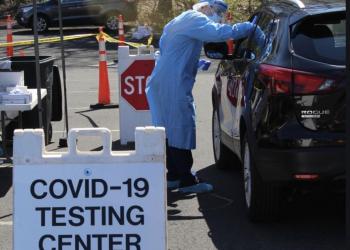It is illegal to obstruct, injure, intimidate, or interfere with a person or vehicle occupant attempting to enter a vaccination site. The “harassing” restriction has been struck from the statute due to being unconstitutionally overbroad and vague.
On October 8, 2021, Governor Newsom signed into law SB 742, enacting new Penal Code section 594.39. Designated as “emergency legislation,” section 594.39 was effective immediately. This new section makes it a misdemeanor (Subd. (b)), punishable by up to $1,000 fine and/or up to six months in county jail, to;
“. . . knowingly approach within 30 feet of any person while a person is within 100 feet of the entrance or exit of a vaccination site and is seeking to enter or exit a vaccination site, or any occupied motor vehicle seeking entry or exit to a vaccination site, for the purpose of obstructing, injuring, harassing, intimidating, or interfering with that person or vehicle occupant.” (Subd. (a))
The relevant definitions (i.e., “obstructing,” etc.) are contained in Subd. (c). Of importance here is the Legislature’s definition of “harassing,” contained in Subd. (c)(1):
“‘Harassing’ means knowingly approaching, without consent, within 30 feet of another person or occupied vehicle for the purpose of passing a leaflet or handbill to, displaying a sign to, or engaging in oral protest, education, or counseling with, that other person in a public way or on a sidewalk area.”
On October 30th, Federal District Court Judge Dale A. Drozd ruled in Right to Life of Central California v. Bonta (Calif. East. Dist. Ct., Oct. 30, 2021) 2021 U.S. Dist. LEXIS 209871, that the law’s “uncommon definition” of “harassing,” as it is defined in the statute, is overly broad and unconstitutionally vague. So the judge issued a temporary restraining order barring the state from enforcing the “harassing” portion of this new law, specifically leaving in place the remainder of the statute, i.e.; the restrictions on “obstructing (Subd. (c)(4)), injuring (not defined), intimidating (Subd. (c)(3)), or interfering with (Subd. (c)(2)) that person or vehicle occupant.” The problem with the term “harassing,” per the judge, is that its definition as contained in the statute is too broad and too vague, necessarily “conducive to different and conflicting interpretations on what conduct is even prohibited by its terms.” This all comes under the constitutional requirement that criminal statutes cannot be so broad that they necessarily include constitutionally protected activity, and/or so vague as to fail to give notice to reasonable persons that what they are doing is illegal. Note that this is nothing more than a “temporary” restraining order, issued by a federal trial court judge, and subject to appeal to the Ninth Circuit Court of Appeal. So while you must abide by this case’s restrictions on the use of this statute, at least for now, it can all change in a heartbeat.

